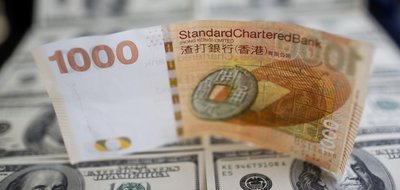Dollar peg is still the right choice for Hong Kong
SCMP (2015.01.21, Comment – Insight & Opinon)
The Swiss National Bank dropped a bombshell last Thursday when it removed the Swiss franc’s peg to the euro. In the wake of its announcement, a cacophony of opinions and speculation has emerged on why the bank chose to cut its ties with the euro. These are mostly directed towards its desire to cut loose prior to the European Central Bank’s much-anticipated quantitative easing policy.
Given that the franc quickly rose 25 per cent against the US dollar and 30 per cent against the euro, amid chaotic trade movements, the market clearly did not anticipate such a move.
In addition to the foreign exchange volatility, it is interesting to note that investors looking for a safe haven have flocked to gold and silver, pushing both prices up by more than 10 per cent from recent lows.
The franc’s exchange rate ceiling was introduced in September 2011, at the height of the euro crisis, when Italian and Spanish sovereign debt yields soared to levels not seen since the birth of the euro. Because of this, it is sensible to assume that, from the onset, the Swiss people have held a pessimistic view of the euro, and one must subsequently question the Swiss National Bank’s initial decision to peg to the inferior currency.
Now, regardless of what explanations bank officials may give, the decision will ensure that Switzerland suffers short-term pain as a result of its policy reversal. By some estimates, the move will cost Swiss exporters up to 5 billion Swiss francs (HK$44.2 billion) as market reactions push up the value of the franc.
Naturally, the surprise announcement drew speculation about whether the Hong Kong dollar peg to the US dollar is challengeable. But a brief analysis reveals they are largely incomparable. While the Hong Kong dollar peg shares certain similarities with the franc-euro peg, the fundamental difference is that the Hong Kong Monetary Authority has perceived the greenback as a high-quality currency since the introduction of our peg, whereas the Swiss central bank does not share the same view of the euro, because the ECB’s credibility does not match the prudence of the Deutsche Bundesbank, considered by many to be its predecessor.
The greenback, supported by perceived American commitment to the rule of law and military might, provides a relatively stable exchange rate and is viewed as the best fit for Hong Kong’s small, open economy. Most Hongkongers, including past and present government administrations, share this view.
We should also remember that the peg was introduced in 1983, following a consensus reached by the British and Chinese governments.
It must be noted that both the Swiss National Bank and HKMA could avoid currency appreciation by printing more local currency.
As history has revealed, Hong Kong’s commitment and trust to the greenback means that efforts to challenge the peg will ultimately be in vain. The HKMA has certainly shown the international community considerably more foresight than the Swiss National Bank.
Once again, Hong Kong has successfully demonstrated its credentials as an international financial centre that others should follow.
Peter Wong is executive director of the Lion Rock Institute

